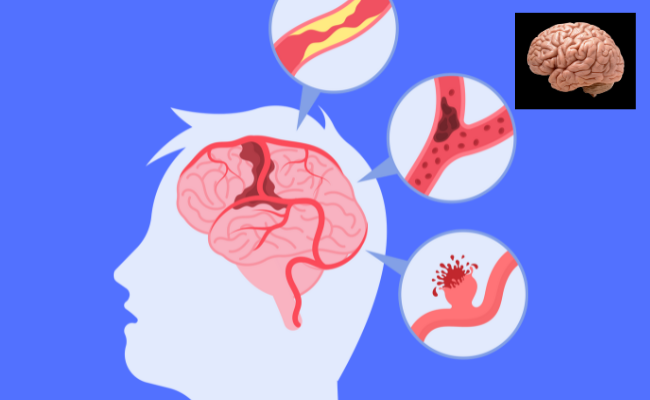How to Treat Subarachnoid Hemorrhage?
- February 14, 2024
- No Comments

What is Subarachnoid Hemorrhage?
Subarachnoid hemorrhage is a medical emergency where bleeding happens in the space between the brain and the tissue covering it. Usually caused by a burst blood vessel in the brain, known as an aneurysm, it can lead to permanent brain damage or death if not treated promptly. Symptoms include a sudden, severe headache, brief loss of consciousness, vomiting, neck stiffness, and altered consciousness. Immediate medical attention is crucial to prevent complications like cerebral vasospasm, hydrocephalus, or worse, death.
Why is Prompt Treatment Necessary?
Immediate treatment of subarachnoid hemorrhage is essential to prevent further bleeding, manage complications, and improve outcomes. Without timely intervention, patients are at risk of developing cerebral vasospasm—a dangerous condition where blood vessels in the brain constrict, potentially leading to ischemic stroke and further brain damage. Additionally, increased intracranial pressure resulting from the hemorrhage can lead to herniation of brain tissue, causing irreversible neurological deficits or death.
How to Treat Subarachnoid Hemorrhage?
- Emergency Medical Care: Upon suspicion of subarachnoid hemorrhage, immediate medical attention is necessary. Emergency medical services should be contacted to transport the patient to a hospital equipped with neurosurgical capabilities.
- Diagnostic Evaluation: Upon arrival at the hospital, a thorough neurological examination and diagnostic tests such as computed tomography (CT) scan or magnetic resonance imaging (MRI) are conducted to confirm the diagnosis and identify the source of bleeding, typically an aneurysm.
- Neurosurgical Intervention: Once diagnosed, neurosurgical intervention may be necessary to address the underlying cause of the hemorrhage. This may involve endovascular coiling or surgical clipping of the ruptured aneurysm to prevent further bleeding.
- Medical Management: In addition to surgical intervention, medical management plays a crucial role in the treatment of subarachnoid hemorrhage. Patients may receive medications to control blood pressure, prevent vasospasm, and manage symptoms such as pain and nausea.
Treatment Solutions for Subarachnoid Hemorrhage:
- Endovascular Coiling: Endovascular coiling is a minimally invasive procedure where a catheter is threaded into the blood vessels of the brain, and small coils are inserted into the aneurysm to block blood flow and prevent rupture. This technique offers a less invasive alternative to surgical clipping and is associated with shorter hospital stays and faster recovery times.
- Surgical Clipping: Surgical clipping involves opening the skull to access the aneurysm directly and placing a metal clip across the base of the aneurysm to prevent further bleeding. While more invasive than endovascular coiling, surgical clipping may be preferred for certain types of aneurysms or in cases where endovascular coiling is not feasible.
- Medication: Medications such as nimodipine may be prescribed to prevent cerebral vasospasm, a common complication of subarachnoid hemorrhage that can lead to ischemic stroke. Pain medications and antiemetics may also be administered to manage symptoms and improve patient comfort.
Benefits of Prompt Treatment:
- Prevention of Further Bleeding: One of the primary benefits of prompt treatment is the prevention of further bleeding. Subarachnoid hemorrhage occurs when an aneurysm ruptures, causing blood to leak into the subarachnoid space. Prompt medical intervention, such as neurosurgical procedures or endovascular coiling, can stop the bleeding and reduce the risk of rebleeding, which can lead to more extensive brain damage or even death.
- Prevention of Complications: Subarachnoid hemorrhage can lead to various complications, including cerebral vasospasm, hydrocephalus, and increased intracranial pressure. Timely treatment helps mitigate these complications by addressing the underlying cause of the hemorrhage and managing associated symptoms. For example, medications such as nimodipine may be administered to prevent cerebral vasospasm, while surgical interventions can alleviate hydrocephalus or reduce intracranial pressure.
- Improved Neurological Outcomes: Early intervention can significantly improve neurological outcomes for patients with subarachnoid hemorrhage. By preventing further damage to brain tissue and minimizing the impact of complications such as vasospasm or hydrocephalus, prompt treatment helps preserve neurological function and reduces the risk of long-term disability or cognitive impairment.
- Reduced Risk of Mortality: Subarachnoid hemorrhage is a life-threatening condition, with mortality rates ranging from 10% to 50%, depending on various factors such as the severity of the hemorrhage and the presence of complications. Prompt treatment reduces the risk of death by addressing the underlying cause of the hemorrhage and preventing complications that could lead to a fatal outcome.
- Faster Recovery Times: Early intervention allows for faster initiation of appropriate therapies and interventions, leading to shorter hospital stays and faster recovery times for patients with subarachnoid hemorrhage. By promptly addressing the hemorrhage and managing associated symptoms, healthcare providers can optimize the patient's recovery trajectory and improve overall quality of life.
Comments (0)